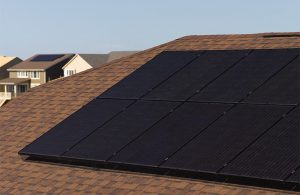Revolution in low-light imaging with integrated photovoltaic and photodetector organic device

Revolution in low-light imaging with integrated photovoltaic and photodetector organic device
by Riko Seibo
Seoul, South Korea (SPX) Jan 26, 2024
In a significant advancement in organic-based optoelectronic technology, the Korea Institute of Science and Technology (KIST), in collaboration with experts from Korea University and Ewha Womans University, has developed an innovative device that uniquely combines the functions of organic photovoltaic cells (OPVs) and organic photodetectors (OPDs). This development marks a novel stride in creating low-power, efficient solutions for indoor electronics and wireless IoT sensors.
Historically, the development of OPVs and OPDs has been pursued independently, despite their potential synergies. OPVs are known for their ability to generate electricity even under low-light conditions, while OPDs excel in capturing images. However, their independent development paths have so far limited their practical application in next-generation, miniaturized devices due to efficiency constraints.
The joint research team, led by Dr. Min-Chul Park and Dr. Do Kyung Hwang from KIST, Prof. Jae Won Shim and Prof. Tae Geun Kim from Korea University, and Prof. JaeHong Park from Ewha Womans University, has bridged this gap by integrating these two technologies into a single device. This innovative approach not only enables simultaneous energy harvesting and image capturing but also significantly enhances energy efficiency in indoor environments.
One of the key advancements in this technology is the transformation of the organic semiconductor layer into a multicomponent structure, which has led to a remarkable improvement in the device’s performance. In indoor settings, the device achieves an impressive photoelectric conversion efficiency of over 32%, coupled with a linear dynamic range exceeding 130 dB. This enhancement, particularly in contrast ratio and low-light conditions, allows for clearer image capturing compared to conventional silicon devices, which typically offer a linear dynamic range of around 100 dB.
The research team has also made notable progress by successfully implementing single-pixel image sensing. This system captures ambient light, converts it into electrical energy, and uses this energy for image acquisition. This new photodetector, characterized by its multi-component semiconductor layer, offers versatile applications. It functions not only as a conventional camera but also as an aesthetic and practical element that can be integrated into windows or walls, providing sufficient resolution to discern shapes and movements.
Dr. Min-chul Park from KIST underscored the versatility and potential of this technology, stating, “While primarily functioning as an energy harvester, it can also be applied to detect movement and recognize motion patterns in environments without light.” He expressed optimism about its applications in various sectors, including human-computer interaction (HCI) research and smart indoor environments.
This breakthrough represents a significant step forward in the field of organic optoelectronics. By combining energy harvesting and imaging capabilities, the team has opened new avenues for eco-friendly and efficient solutions in indoor electronic applications. The device’s ability to operate effectively in low-light conditions while providing dual functionality underscores its potential impact on the advancement of wireless IoT sensors and other indoor electronics.
Research Report:Self-Powering Sensory Device with Multi-Spectrum Image Realization for Smart Indoor Environments
Related Links
National Research Council of Science and Technology
All About Solar Energy at SolarDaily.com





